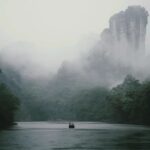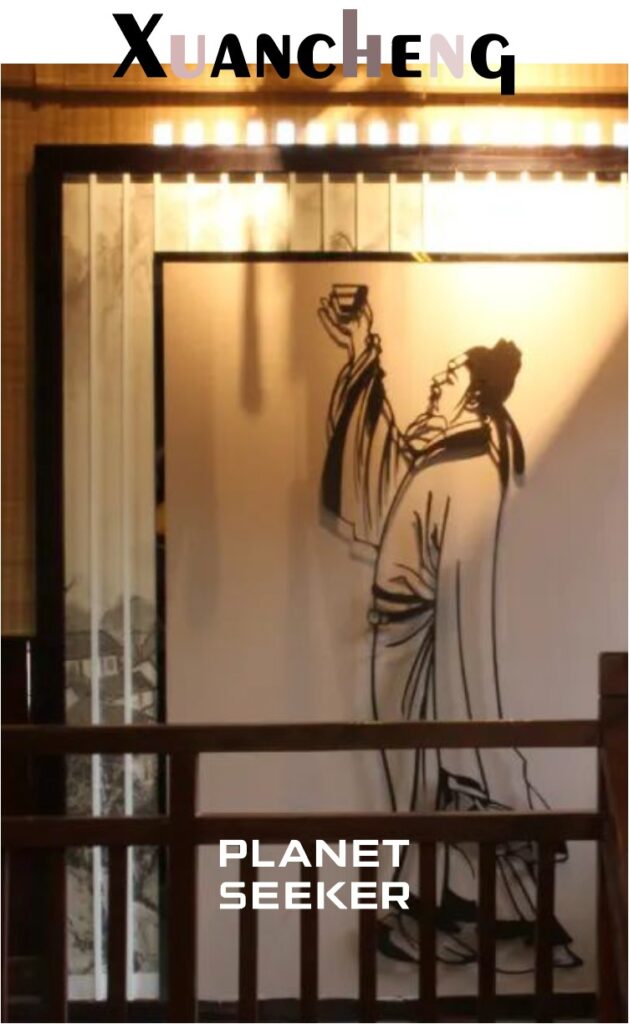
Nestled in the southeastern part of Anhui Province, Xuancheng is a city steeped in history and rich cultural heritage. Throughout history, the renowned poet Li Bai visited Xuancheng seven times, leaving behind more than 80 poems, with the most well-known being “Sitting Alone on Jingting Mountain.”
As a picturesque destination where mountains and rivers intertwine, Xuancheng is home to the ancient “living fossil” Yangtze alligator and numerous ancient villages hidden amidst the lush greenery. The city also played a significant role in modern history, serving as the headquarters of the New Fourth Army, offering visitors a chance to embark on a red culture journey and understand the momentous events of that era.
Last but not least, when mentioning Xuancheng, one cannot forget about Xuan paper, one of the “Four Treasures of the Study.” The craftsmanship of Xuan paper production, recognized as a national intangible cultural heritage, possesses a unique charm. After visiting, don’t forget to purchase some to take home as a souvenir!
1.Anhui Yangtze Alligator Reproduction Research Center
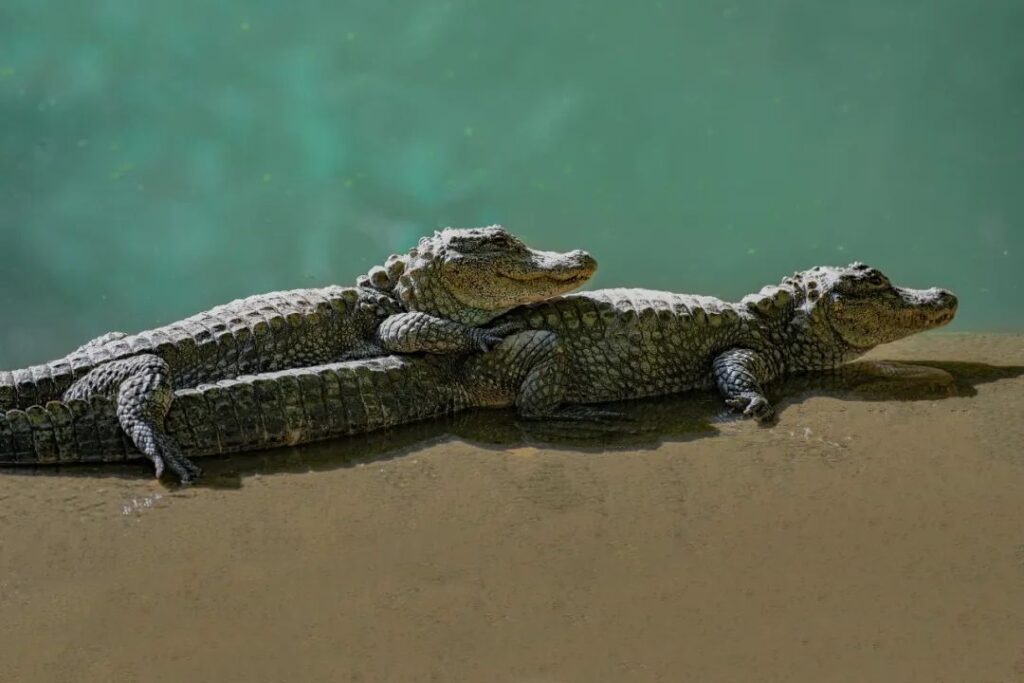
The research center, also known as China Alligator Lake, is located in the southern suburbs of Xuanzhou District and is currently the largest Yangtze alligator breeding base in China. The Yangtze alligator is an endemic species to China and a national first-class protected wild animal, having existed on Earth for over 200 million years.

Recent social media videos showing Yangtze alligators “enjoying Want Want snow cookies” and “fearing being knocked on the head while watching an elderly woman do laundry” have brought smiles to people’s faces. In fact, among the 23 surviving crocodilian species on Earth, the Yangtze alligator is the smallest, slowest, and most docile.
For a long time in the past, due to climate change and human activities, the Yangtze alligator was once on the brink of extinction. Now, in the green hills and clear waters of Alligator Lake, Yangtze alligators have found an ideal environment for inhabitation and reproduction.
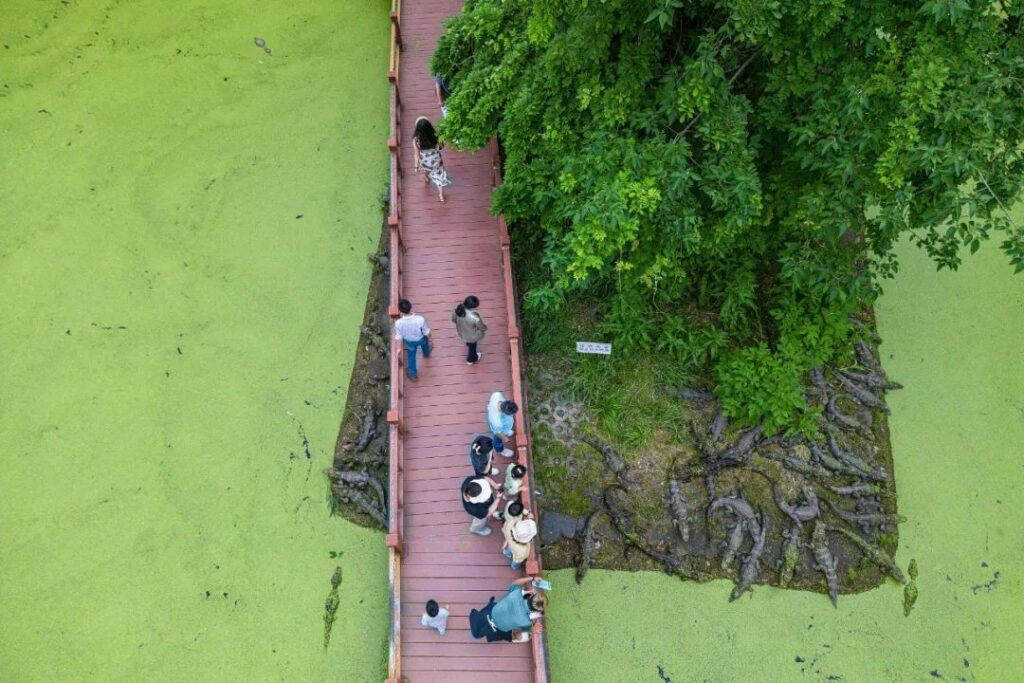
Here, you can observe the alligator groups up close or visit the museum to learn about the history, living habits, and conservation significance of Yangtze alligators. The research center boasts a beautiful environment with lush trees, making it a great place to relax and unwind.
2.Jingting Mountain

“Only Jingting Mountain can be looked at without tiring,” as described by Li Bai. Jingting Mountain, located in the northern suburbs of Xuanzhou District, belongs to the Huangshan mountain range, stretching for more than ten miles from east to west with 60 peaks of varying sizes. Throughout history, thousands of poems, writings, and paintings have been dedicated to Jingting Mountain, earning it the title “Jiangnan Poetry Mountain.”
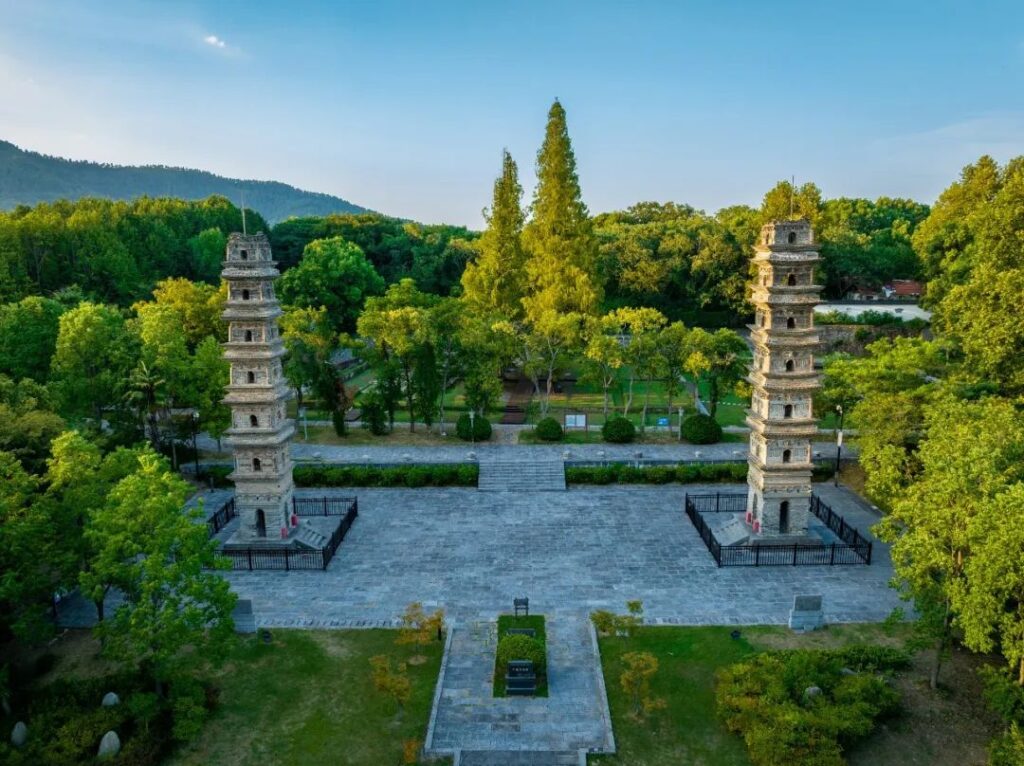
If you’re in good shape, you can hike up the mountain from the East Square, passing by Jingting Lake Park and the twin pagodas of Guangjiao Temple. Take a closer look at the twin pagodas, as they are rare Song Dynasty pagodas that follow the square floor plan of the Tang Dynasty. If you want to save some energy, you can take a taxi directly to the Jingting Mountain ticket office and then take a sightseeing bus from there.
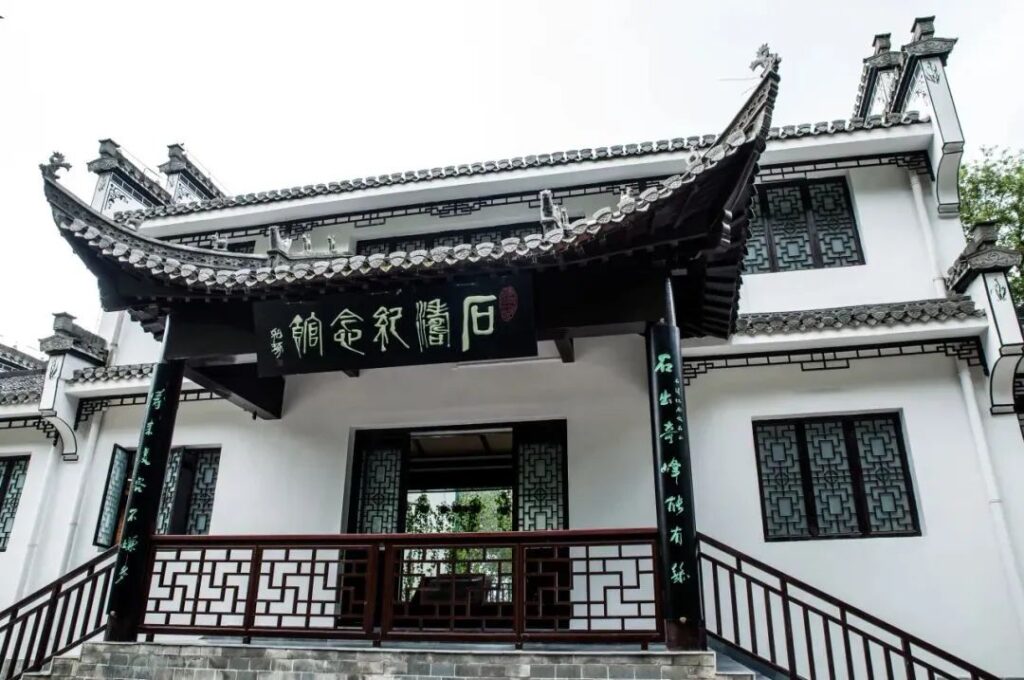
Get off at the Shi Tao Memorial Hall, a Hui-style building that houses many reproductions of Shi Tao’s paintings, along with an introduction to his life and his traces in Xuancheng. After visiting, begin your ascent from here. Jingting Mountain was originally named Zhaoting Mountain but was renamed Jingting Mountain during the Western Jin Dynasty to avoid the taboo of Emperor Sima Zhao’s name. The ancient Zhaoting archway is worth a look, as it was built during the Ming Dynasty and renovated during the Qing Dynasty.
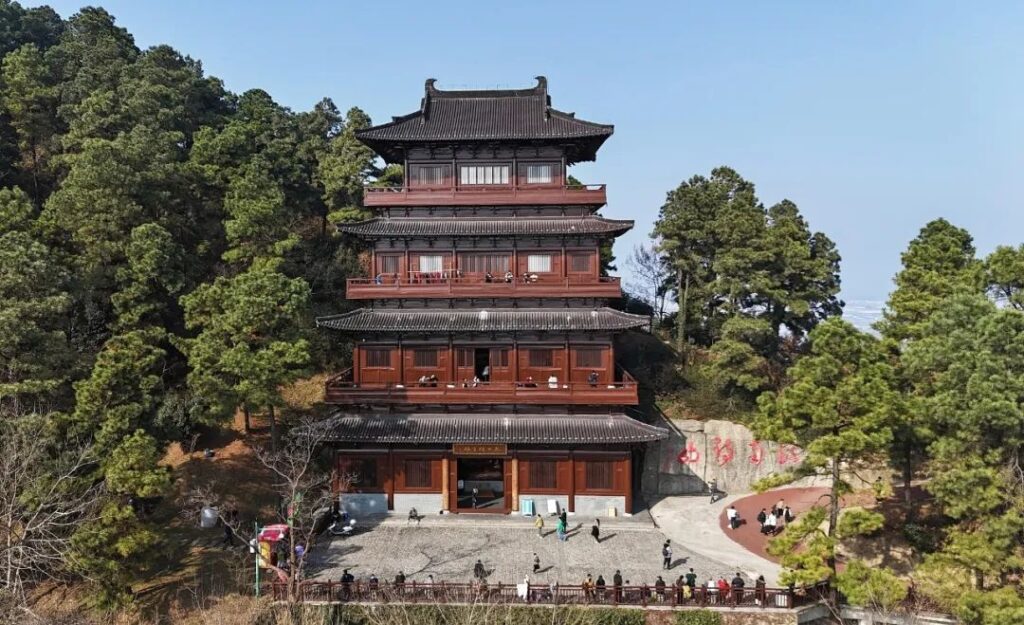
From the ancient Zhaoting archway, climb the steps, pass the Bamboo Sea Trail, and ascend the mountain to reach the Taibai Sitting Alone Tower. This Tang-style building is built in tiers that recede according to the mountain’s contours. As you climb the tower and take in the scenery, you may gain a deeper understanding of Li Bai’s two lines of poetry.
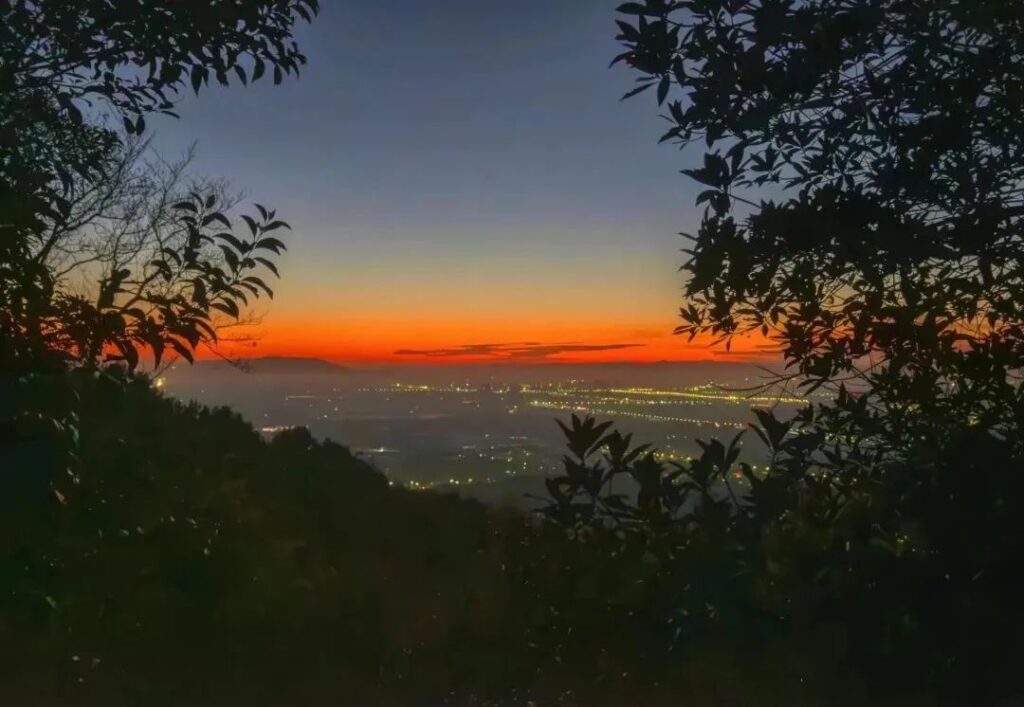
Continue climbing with vigor to reach the summit of Jingting Mountain. This is an excellent spot for watching the sunrise, although reservations are required, and only 300 people are allowed each day. Even if you don’t catch the sunrise, taking in the beautiful scenery of Xuancheng from the mountain top is still a delightful experience!
3.Taohua Tan Town
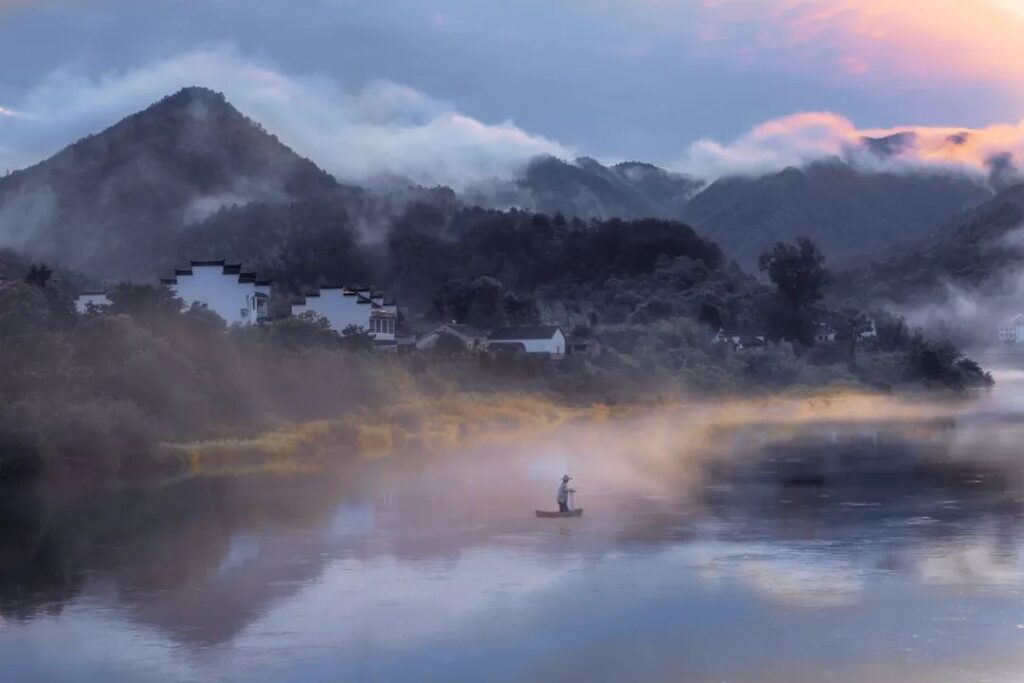
Jing County is located in the southwest of Xuancheng, with Huangshan to the south and Jiuhua Mountain to the west. Taohua Tan Town, featured in the poem “The water of Taohua Tan is a thousand feet deep, yet it cannot compare to the depth of Wang Lun’s friendship in seeing me off,” is situated in this county. The town is located at the source of the Qingyi River, with ripples on the water’s surface and villages lining the shore, nestled among the green mountains and clear waters.
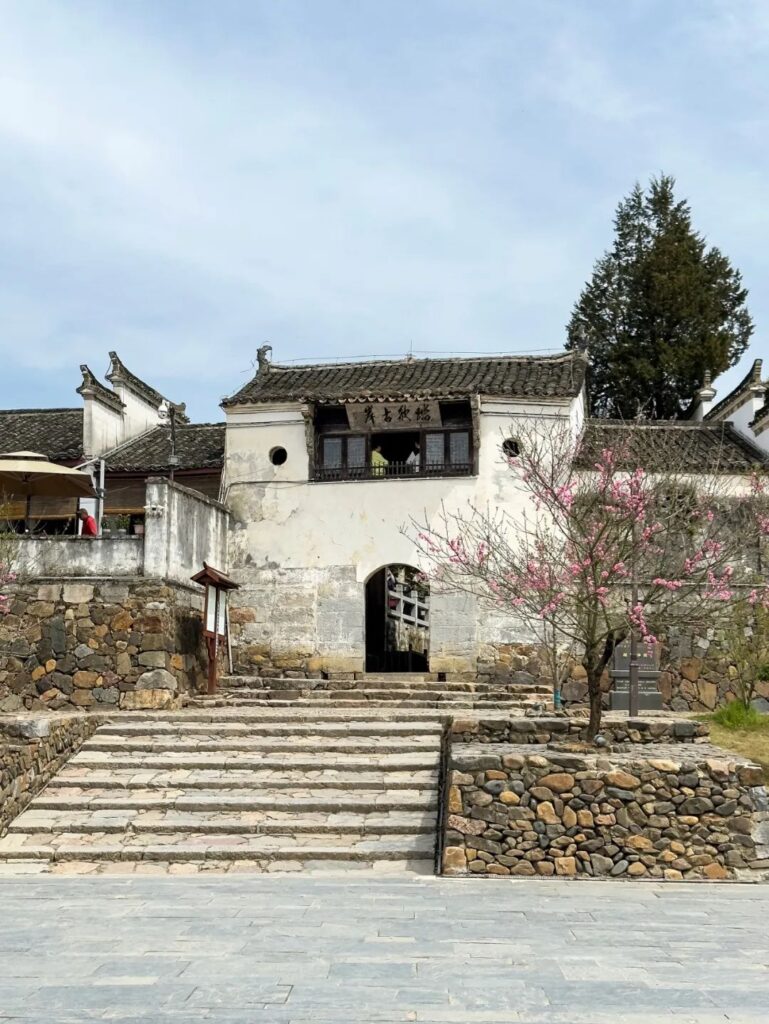
Take a stroll through the village or experience the misty atmosphere on a rainy day to appreciate the beauty described in Li Bai’s poetry.
4.Chaji Village
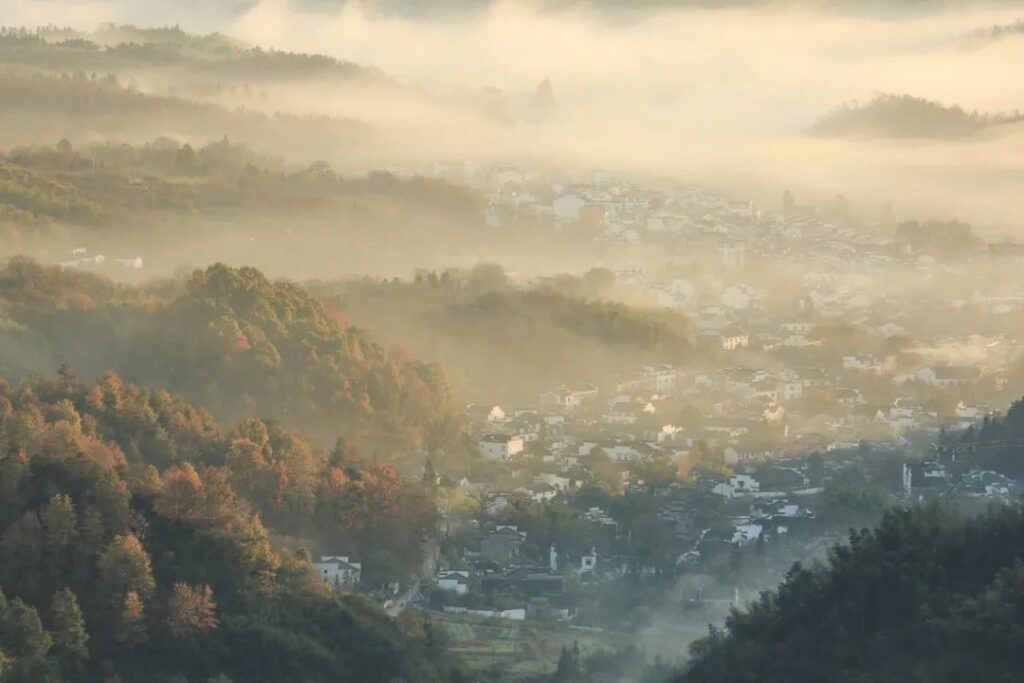
Chaji Village in Taohua Tan Town has a thousand-year history and still preserves more than 200 ancient buildings from the Yuan, Ming, and Qing dynasties. Although there is an entrance fee to visit the village, it is well worth it. The village has a low level of commercialization and retains its ancient and natural atmosphere. The highlights are the Hui-style buildings, including ancestral halls, residential houses, village gates, ancient pagodas, and temples, primarily constructed with bricks and wood and adorned with exquisite carvings.
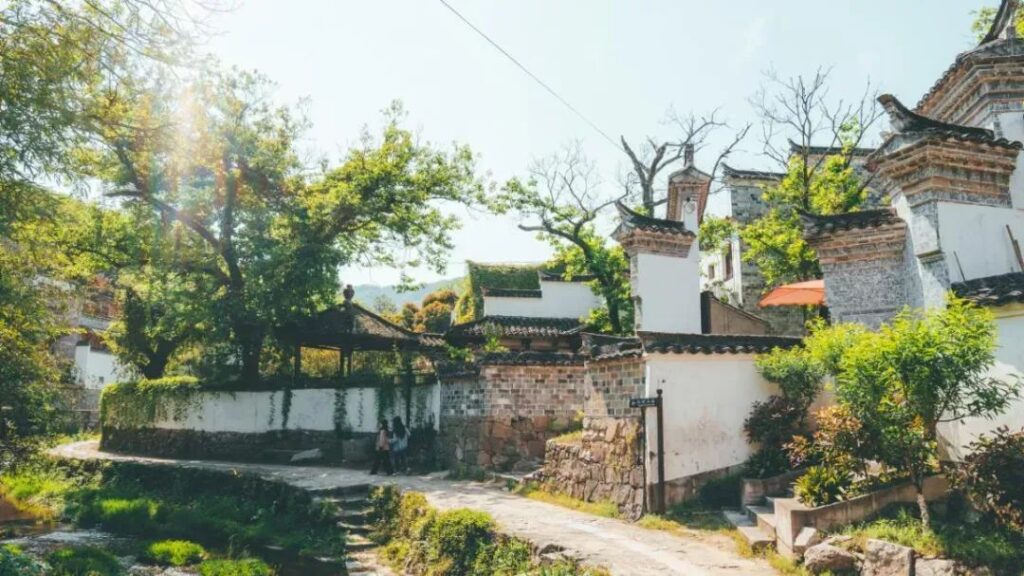
The Xu Stream, Cen Stream, and Shi Stream flow through the village, which has developed along the three streams as its axis and features a complete drainage system. With the rolling hills and gurgling streams, the concept of a “hidden paradise” becomes tangible in Chaji Village, making it an ideal location for sketching and painting.
5.Yunling New Fourth Army Headquarters Memorial Hall
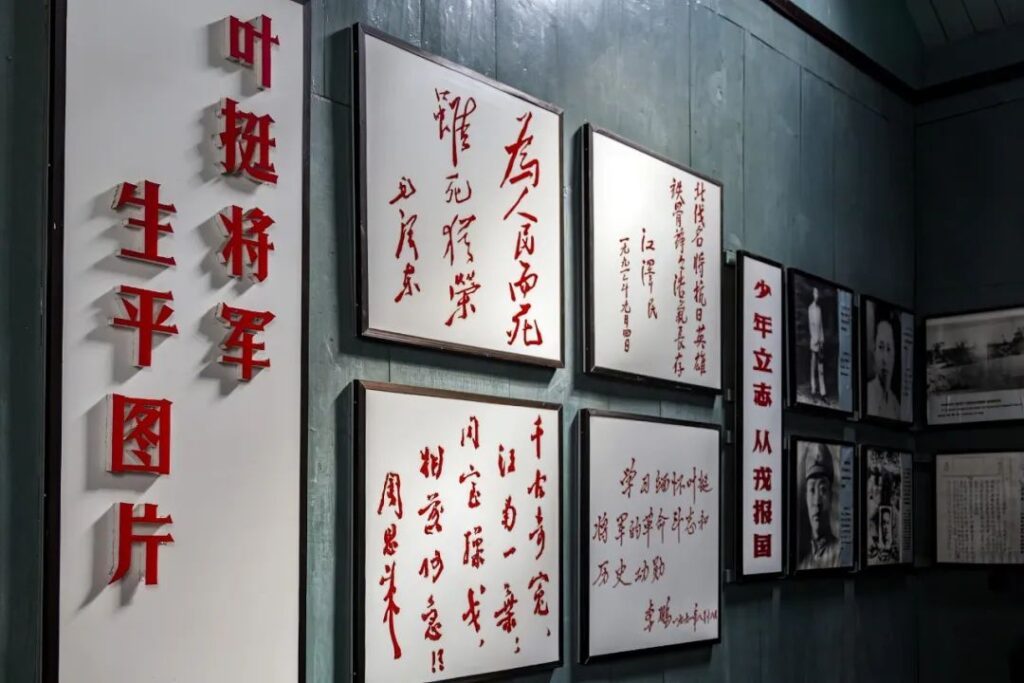
Apart from its picturesque beauty, Jing County has a magnificent history of development. In 1938, the headquarters of the New Fourth Army settled in Yunling Town, Jing County. The army rapidly grew in strength until the “Wannan Incident” in 1941.

To learn about this period of history, you can visit the Yunling New Fourth Army Headquarters Memorial Hall. The memorial hall preserves ten well-maintained former sites, including the army headquarters, assembly hall, political department, and the Southeast Bureau of the Central Committee of the Communist Party of China. These former sites are classical Hui-style buildings from the Ming and Qing dynasties.
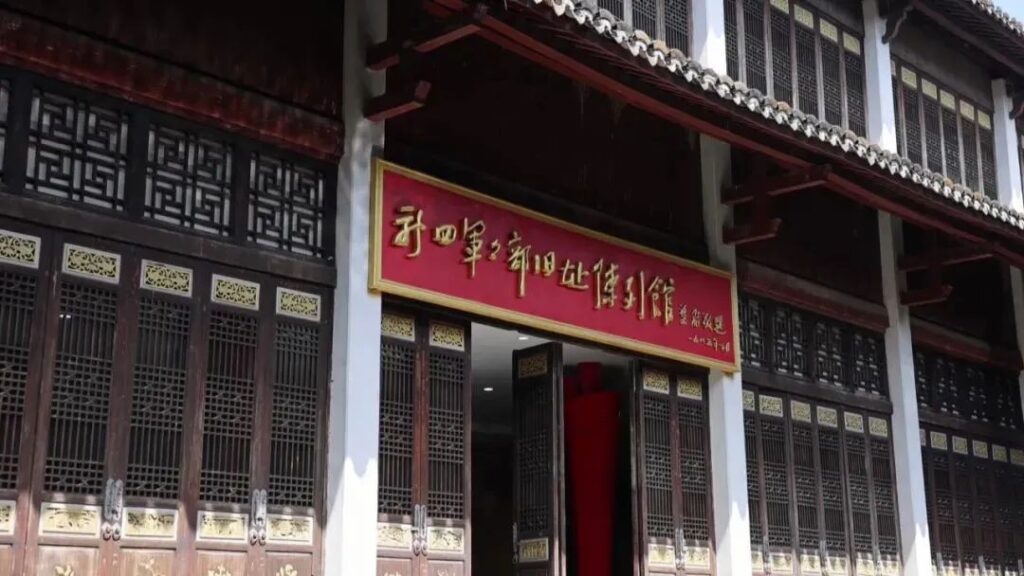
In addition, the New Fourth Army Historical Materials Exhibition Hall has a rich collection and uses multimedia technology to showcase the New Fourth Army’s combat history.
6.China Xuan Paper Cultural Park
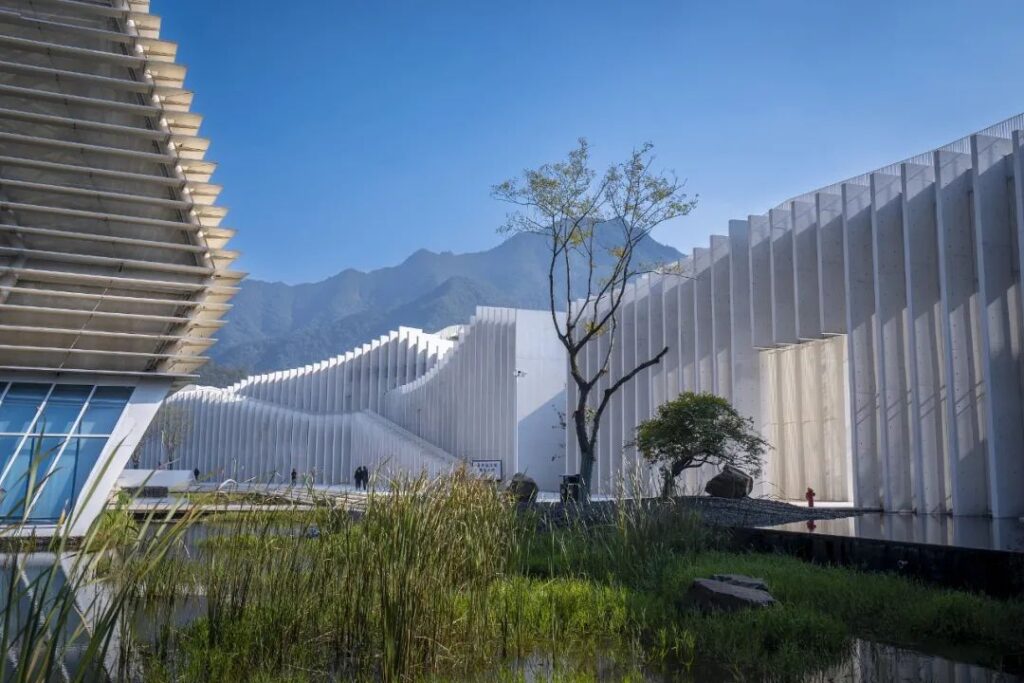
Jing County is known as the “hometown of Xuan paper.” The craftsmanship of Xuan paper production has been included in the first batch of national intangible cultural heritage and the UNESCO Representative List of the Intangible Cultural Heritage of Humanity. The Xuan Paper Cultural Park showcases the past and present of this “thousand-year-old paper” to visitors.
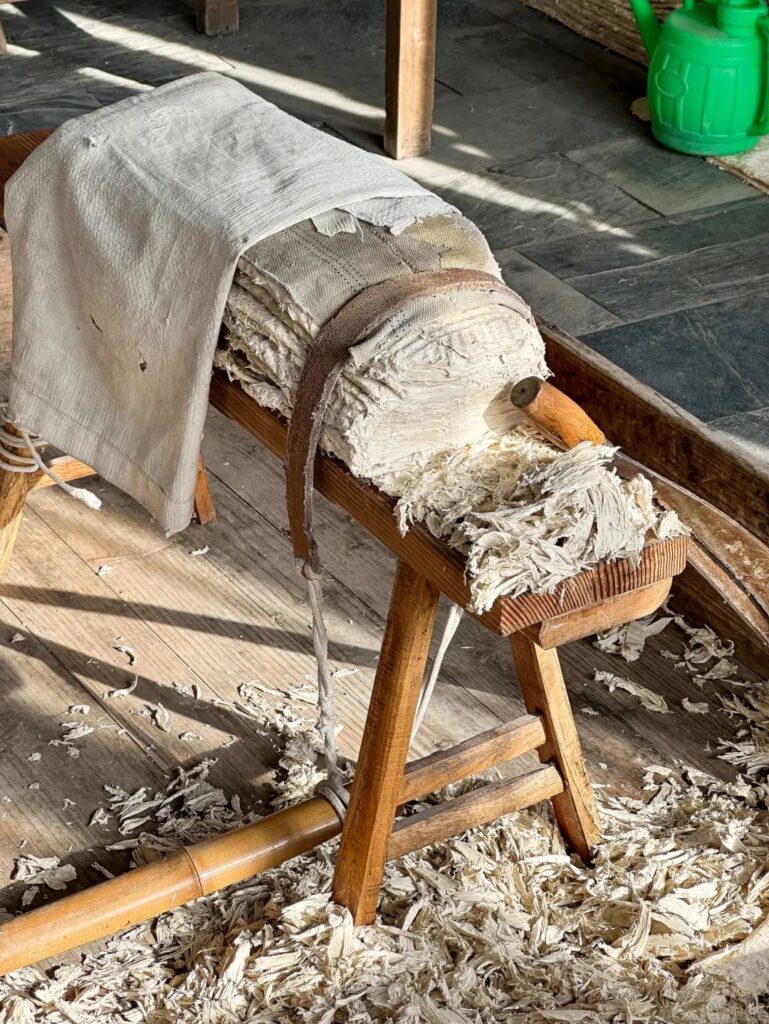
The cultural park consists of the China Xuan Paper Museum, the “Three Zhang Three” giant Xuan paper workshop, and the Xuan paper craftsmanship experience park. The exterior of the Xuan Paper Museum resembles a stack of staggered Xuan paper, while the interior’s three floors display the history and techniques of Xuan paper, the museum’s collection of Xuan paper, and exquisite calligraphy and painting works, respectively.
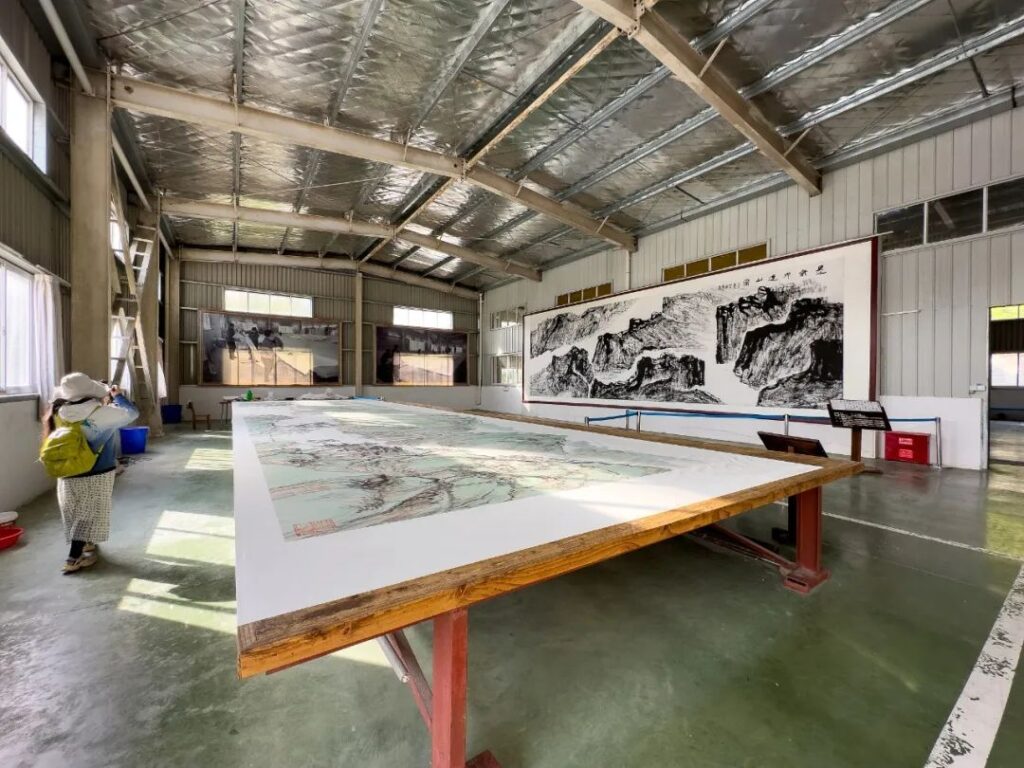
The “Three Zhang Three” giant Xuan paper workshop offers a more intuitive experience, where 44 craftsmen chant in unison and perform the paper scooping process with precision and strength. If watching is not enough, you can try your hand at the craftsmanship experience park. The park also has a shopping area where you can purchase the collectible “Red Star” Xuan paper and experience its legendary characteristics of being “soft and tough, smooth as jade, resistant to insects and decay, and able to produce a myriad of ink variations.”
7.Jixi Museum

The museum is located in the center of the old town, originally serving as the former site of the old county government and the location of the old county yamen ruins. Although the museum’s collection may not have many highlights, the building itself is worth appreciating. The entire building features the Hui-style architectural elements of gray tiles and white walls. The undulating roofline resembles the rolling mountains and rivers surrounding Jixi, while the staggered courtyards and glass curtain walls exemplify the poetic combination of Hui-style architecture and modern architecture.
8.Longchuan Scenic Area
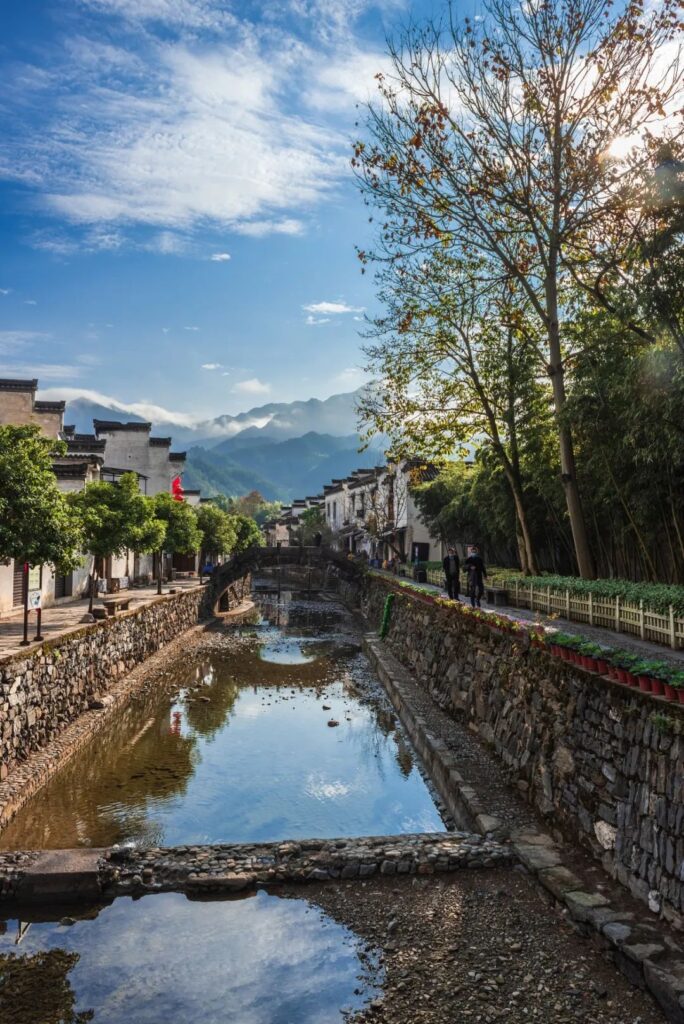
Longchuan is the most famous ancient village in Jixi. The village’s topography resembles a dragon boat sailing out to sea, making it a treasure trove of feng shui. The ancient dwellings in the village are densely packed, exuding a unique charm of an ancient village. The “Longchuan Hu” branch of the Hu family in Jixi originated here, with the most well-known members being Hu Zongxian and Hu Fu from the Ming Dynasty.
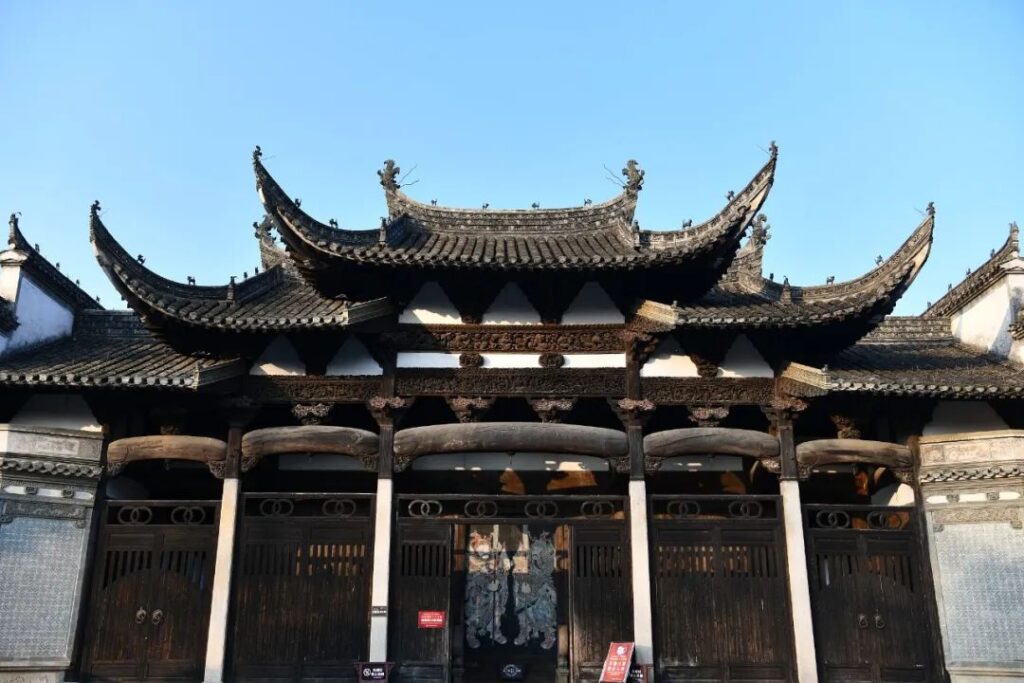
The Hu Family Ancestral Hall in the scenic area is known as the “First Ancient Ancestral Hall in Jiangnan.” The Five Phoenix Building in the ancestral hall has a width of seven bays and a depth of two bays, featuring a double-eaved hip-and-gable roof. The eight large brackets in the front and back form the shape of a soaring phoenix, and the Chinese-style reliefs on the lintels exhibit smooth carving techniques.
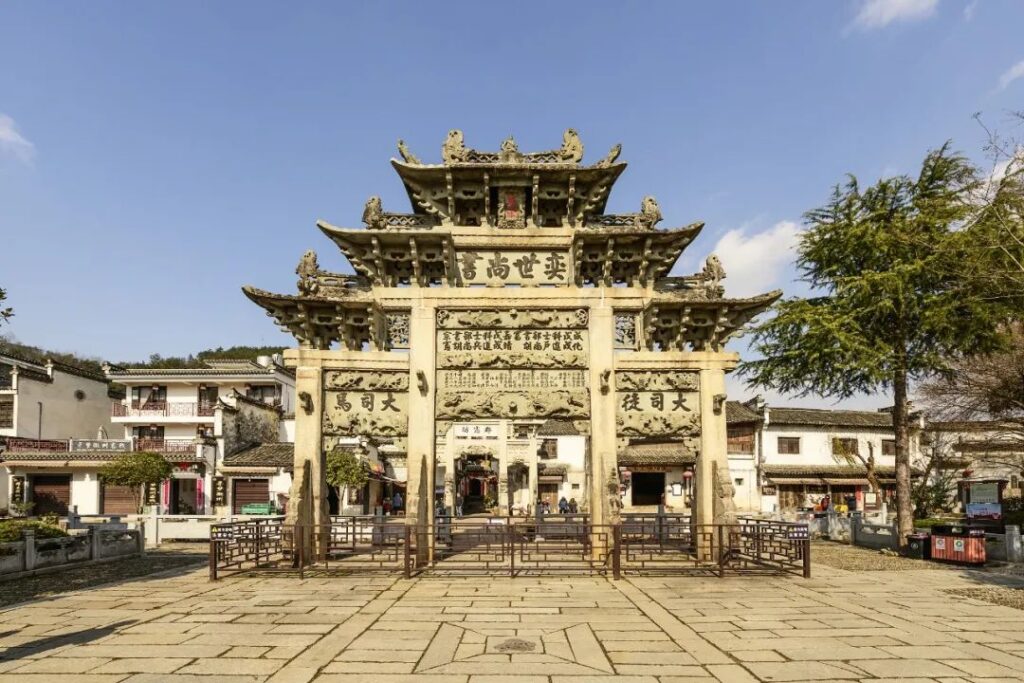
The Yishi Shangshu Memorial Archway is an ancient Huizhou memorial archway erected in honor of Hu Fu and Hu Zongxian. The entire archway features exquisite stone carvings, incorporating traditional auspicious patterns such as dragons and phoenixes, as well as local Jixi flowers, birds, mountains, and rivers. Additionally, the intricate patterns of the interlocking brick tiles are astonishing. It can be said that the Yishi Shangshu Memorial Archway is a typical representative of the stone memorial archways and Hui-style stone carvings from the prosperous Ming Dynasty.
9.Huihang Ancient Trail
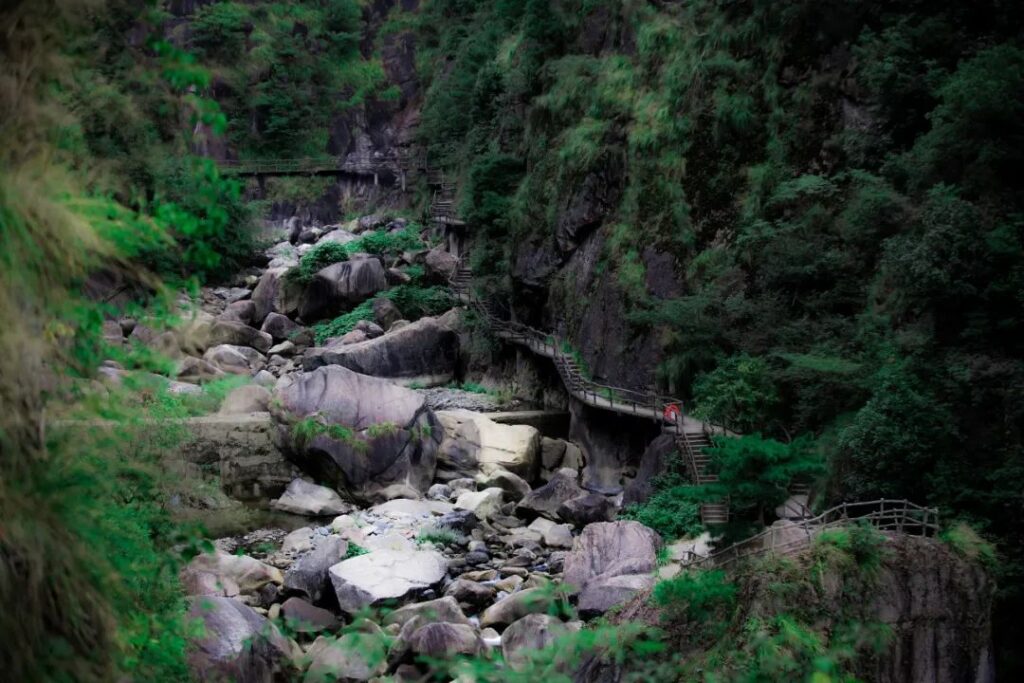
This ancient post road, which began construction during the Tang Dynasty, connects Anhui to Hangzhou. For generations, Hui merchants transported salt, tea, rice, and mountain produce to the outside world via this road. The ancient trail has witnessed the hardships of the Hui merchants and has now become a popular route for hiking enthusiasts to explore ancient sites and tranquil scenery.
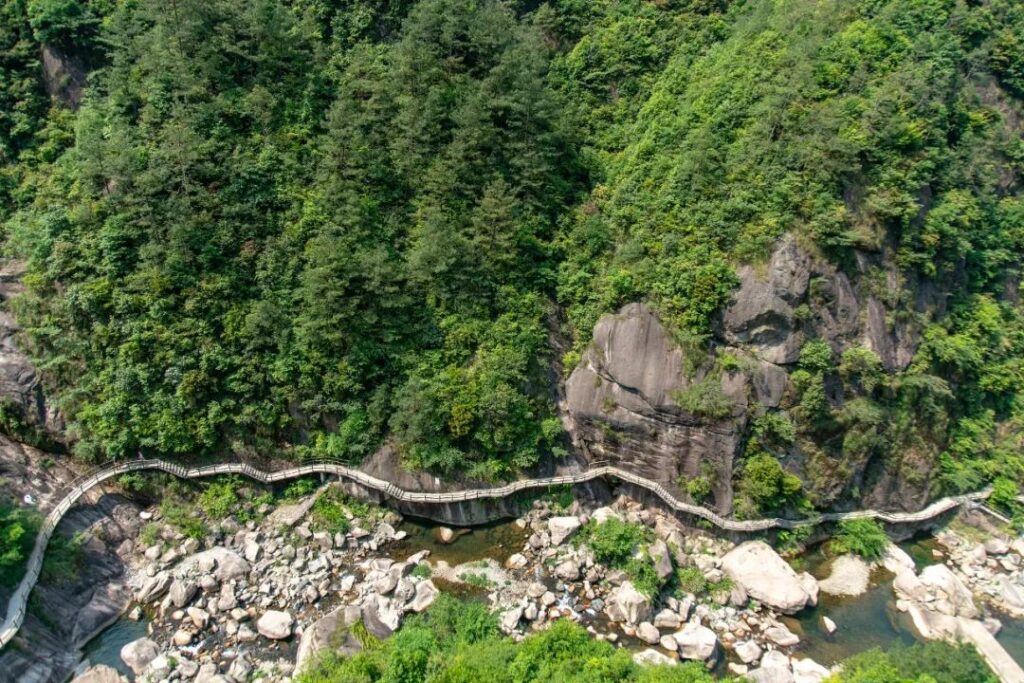
The ancient trail begins at Jiangnan Village in Fuling Town, Jixi County, passing through the “First Pass of Jiangnan,” Yaoyao Ridge, and Lantian Ao before reaching Zhechuan Village in Lin’an District at the border of Anhui and Zhejiang. Many people choose to hike half of the trail, starting from the “First Pass of Jiangnan” and ending at Shicha Pavilion.

From the west gate of the ancient trail scenic area, there are 1,400 stone steps leading up to the “First Pass of Jiangnan,” an important gateway on the Huihang Ancient Trail. After walking for about half an hour, you will reach Shicha Pavilion, where you can take a break and admire the Buddha Palm Peak on the opposite cliff face before returning. Alternatively, you can continue walking to Zhechuan Village and take a car to Hangzhou.

